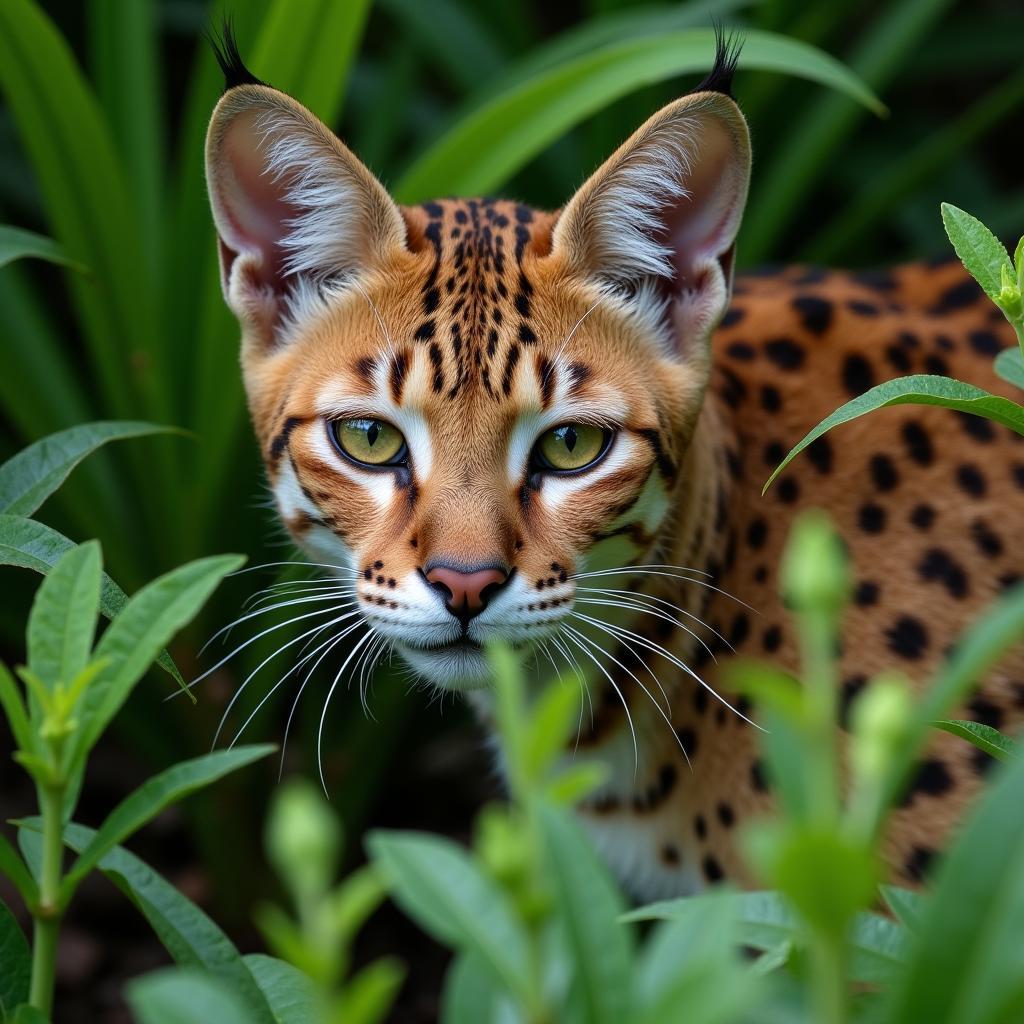African Golden Cat Habitat: Unveiling the Secrets of an Elusive Predator
The African golden cat, a medium-sized wild cat shrouded in mystery, calls the rainforests of Central and West Africa home. This elusive feline, often referred to as the “African Golden Cat Habitat specialist,” thrives in dense forests, navigating a world veiled in shadows and secrets.
A Glimpse into the African Golden Cat’s Domain
Imagine a world painted in shades of emerald and jade, where sunlight struggles to pierce the dense canopy above. This is the preferred habitat of the African golden cat, a creature perfectly adapted to life in the rainforest. These forests, characterized by high rainfall and humidity, provide the ideal conditions for the golden cat’s prey, which includes rodents, birds, and small mammals.
Adaptability and Survival in Diverse Habitats
While rainforests are their stronghold, African golden cats exhibit remarkable adaptability, venturing into a variety of habitats including:
- Secondary forests: These regenerated forests, often disturbed by human activity, still provide suitable cover and prey for the adaptable golden cat.
- Bamboo forests: The dense thickets of bamboo offer excellent camouflage and protection for these solitary felines.
- Swamp forests: Areas with waterlogged soils and specialized vegetation also fall within the golden cat’s habitat range, demonstrating their resilience.
 African golden cat camouflaged in vegetation
African golden cat camouflaged in vegetation
The Importance of Protecting the African Golden Cat’s Home
Despite their adaptability, African golden cats face increasing threats to their survival. Deforestation, driven by agricultural expansion and logging, poses the most significant risk. As their habitat shrinks, these cats face greater competition for resources and increased vulnerability to human-wildlife conflict.
Conservation Efforts and the Future of the Golden Cat
Recognizing the plight of the African golden cat, conservation organizations are working tirelessly to protect their habitat. Initiatives include:
- Establishing protected areas: Creating reserves and national parks where hunting and habitat destruction are prohibited is crucial.
- Promoting sustainable forestry practices: Encouraging logging methods that minimize environmental damage helps preserve forest ecosystems.
- Raising awareness: Educating local communities about the importance of the golden cat and its role in the ecosystem fosters coexistence.
Frequently Asked Questions
What does an African golden cat eat?
These skilled hunters prey on a variety of animals, including rodents, birds, reptiles, and small mammals like duikers.
How big is an African golden cat?
They are medium-sized, typically measuring 60-100 cm in length, with a weight range of 5-18 kg.
Is the African golden cat endangered?
While not yet considered endangered, they are listed as Near Threatened on the IUCN Red List due to habitat loss and hunting pressure.
Where can I see an African golden cat in the wild?
Sightings are rare due to their elusive nature, but protected areas in Central and West Africa offer the best chance of encountering this magnificent cat.
Explore Further
For more insights into the fascinating world of African wildlife, delve into these related articles:
Protecting the African golden cat and its habitat is not just about preserving a species; it’s about safeguarding the ecological integrity of some of the world’s most biodiverse regions. By understanding the threats they face and supporting conservation efforts, we can ensure the survival of this enigmatic feline for generations to come.

